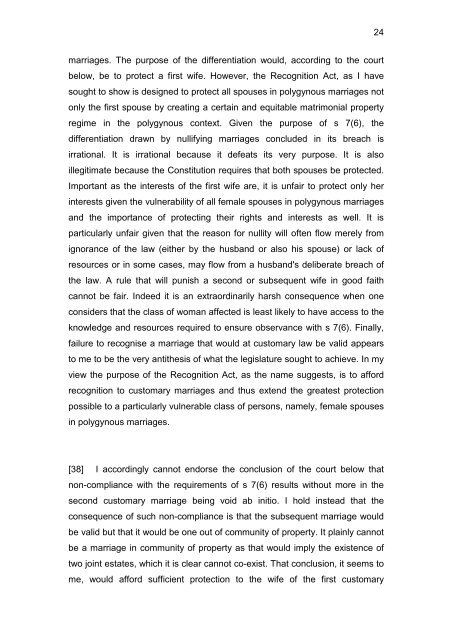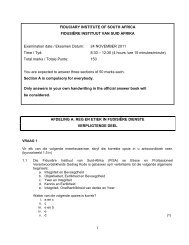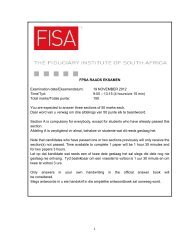Ngwenyama v Mayelane wedding after customary wedding
Ngwenyama v Mayelane wedding after customary wedding
Ngwenyama v Mayelane wedding after customary wedding
Create successful ePaper yourself
Turn your PDF publications into a flip-book with our unique Google optimized e-Paper software.
24<br />
marriages. The purpose of the differentiation would , according to the court<br />
below, be to protect a first wife. However, the Rec ognition Act, as I have<br />
sought to show is designed to protect all spouses i n polygynous marriages not<br />
only the first spouse by creating a certain and equ itable matrimonial property<br />
regime in the polygynous context. Given the purpose of s 7(6), the<br />
differentiation drawn by nullifying marriages concl uded in its breach is<br />
irrational. It is irrational because it defeats its very purpose. It is also<br />
illegitimate because the Constitution requires that both spouses be protected.<br />
Important as the interests of the first wife are, i t is unfair to protect only her<br />
interests given the vulnerability of all female spo uses in polygynous marriages<br />
and the importance of protecting their rights and i nterests as well. It is<br />
particularly unfair given that the reason for nulli ty will often flow merely from<br />
ignorance of the law (either by the husband or also his spouse) or lack of<br />
resources or in some cases, may flow from a husband 's deliberate breach of<br />
the law. A rule that will punish a second or subseq uent wife in good faith<br />
cannot be fair. Indeed it is an extraordinarily har sh consequence when one<br />
considers that the class of woman affected is least likely to have access to the<br />
knowledge and resources required to ensure observan ce with s 7(6). Finally,<br />
failure to recognise a marriage that would at custo mary law be valid appears<br />
to me to be the very antithesis of what the legisla ture sought to achieve. In my<br />
view the purpose of the Recognition Act, as the nam e suggests, is to afford<br />
recognition to <strong>customary</strong> marriages and thus extend the greatest protection<br />
possible to a particularly vulnerable class of pers ons, namely, female spouses<br />
in polygynous marriages.<br />
[38] I accordingly cannot endorse the conclusion of the court below that<br />
non-compliance with the requirements of s 7(6) resu lts without more in the<br />
second <strong>customary</strong> marriage being void ab initio. I h old instead that the<br />
consequence of such non-compliance is that the subs equent marriage would<br />
be valid but that it would be one out of community of property. It plainly cannot<br />
be a marriage in community of property as that woul d imply the existence of<br />
two joint estates, which it is clear cannot co-exis t. That conclusion, it seems to<br />
me, would afford sufficient protection to the wife of the first <strong>customary</strong>



![Motsepe v Khoza customary marriage and child[3]](https://img.yumpu.com/44777240/1/184x260/motsepe-v-khoza-customary-marriage-and-child3.jpg?quality=85)


